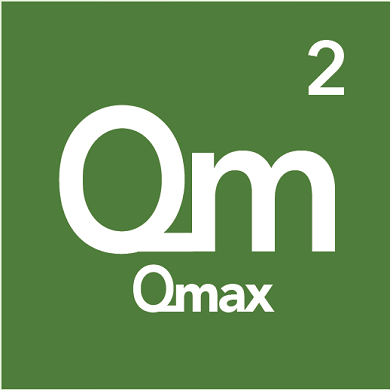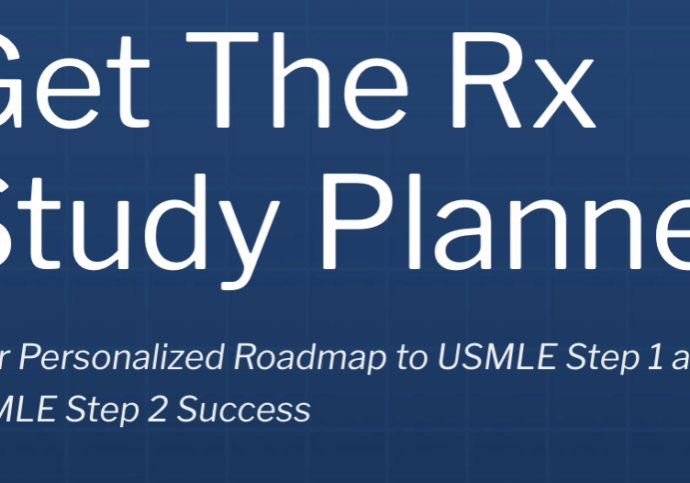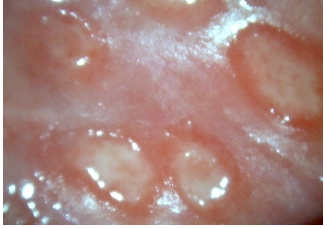Check out today’s Step 2 CK Qmax Question Challenge.
Know the answer? Post it in the comments below! Don’t forget to check back for an update with the correct answer and explanation (we’ll post it in the comments section below).
After an uncomplicated pregnancy and cesarean section for breech presentation, twins are born at 32 weeks’ gestation to a 24-year-old primigravida mother. Twin A weighs 1610 g (3.5 lb) and has Apgar scores of 8 and 9 at 1 and 5 minutes, respectively. Twin B weighs 1600 g (3.5 lb) and has Apgar scores of 7 and 8 at 1 and 5 minutes, respectively. Within minutes of birth, twin B becomes mildly cyanotic and tachypneic with subcostal retractions, expiratory grunting, and nasal flaring. Twin B’s blood pressure is 58/39 mm Hg, heart rate is 130/min, respiratory rate is 100/min, and temperature is 37.0°C (98.6°F). Twin B is intubated and given 70% oxygen.
Compared to twin A, twin B is at greater risk of developing which of the following?
A. Apnea of prematurity
B. Gastroesophageal reflux disease
C. Hyperbilirubinemia
D. Intraventricular hemorrhage
E. Retinopathy of prematurity
———————–
Want to know the ‘bottom line?’ Purchase a USMLE-Rx Subscription and get many more features, more questions, and passages from First Aid, including images, references, and other facts relevant to this question.
This practice question is an actual question from the USMLE-Rx Step 2 CK test bank. Get more Step 2 CK study help atUSMLE-Rx.com.





E retinopathy of prematurity.
A
E
E
E.
The correct answer is E. Twin B has developed neonatal respiratory distress syndrome (NRDS). Retinopathy of prematurity (ROP) is a common entity among premature infants. It is associated with two major risk factors: premature birth, and use of supplemental oxygen. The latter is thought to be an angioproliferative event regulated by vascular endothelial growth factor. By exposing twin B to an FIO2 of 0.7, he is now at increased risk of developing ROP compared to twin A. NRDS can be associated with an increased risk of bronchopulmonary dysplasia, persistent patent ductus arteriosus, intraventricular hemorrhage, and necrotizing enterocolitis in the premature newborn. While all of the other choices are associated with prematurity, twin B is the only one exposed to supplemental oxygen and therein lies the difference.
A is not correct. Apnea of prematurity is a developmental disorder in premature infants due to immature respiratory control. Etiology of this disorder can be central, obstructive, or mixed. Both twins are equally likely to develop apnea of prematurity because they are equally premature.
B is not correct. Gastroesophageal reflux disease (GERD) is more common in premature infants compared to term infants. This is due to a variety of mechanisms including transient relaxation of the lower esophageal sphincter, delayed gastric emptying, and poor esophageal motility. Both twins are at increased yet presumably equal risk of developing GERD because they are equally premature.
C is not correct. There are many causes of hyperbilirubinemia in the newborn. Etiologies include overproduction of bilirubin due to hemolytic diseases (ABO or R(h)D incompatibility) or red blood cell membrane defects, inherited defects that compromise bilirubin clearance (ie, Crigler-Najjar and Gilbert syndrome). Other causes include breast-milk jaundice and breast-feeding failure jaundice. Preterm infants are more likely to develop hyperbilirubinemia due to increased difficulty establishing breast-feeding.
D is not correct. Intraventricular hemorrhage (IVH) typically occurs in the capillary system of the germinal matrix. These blood vessels are fragile and senstive to changes in cerebral blood flow. Preterm infants are at an increased risk for developing IVH due to impaired cerebrovasculature autoregulation. Both twins are at increased risk of IVH because they are premature.
Thank you .
Thank you for the wonderful explanation. It serves to cement the information in order to be able to use it at some future time.
I would also love to add that when you do not surely have an insurance policy or else you do not remain in any group insurance, you could well gain from seeking the help of a health insurance professional. Self-employed or people with medical conditions typically seek the help of the health insurance brokerage service. Thanks for your text.
We’re a group of volunteers and opening a new scheme in our community. Your web site offered us with valuable information to work on. You’ve done an impressive job and our entire community will be grateful to you.